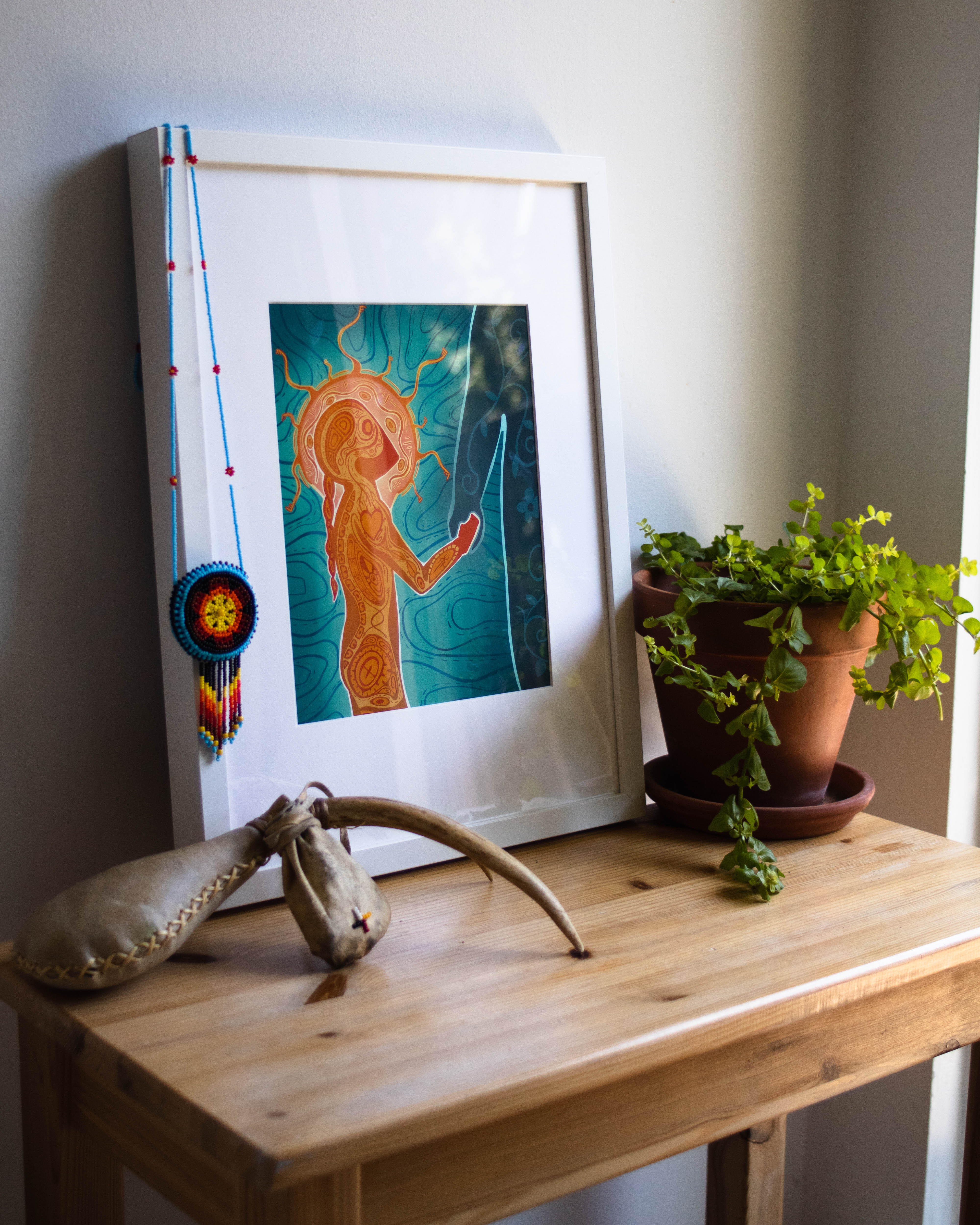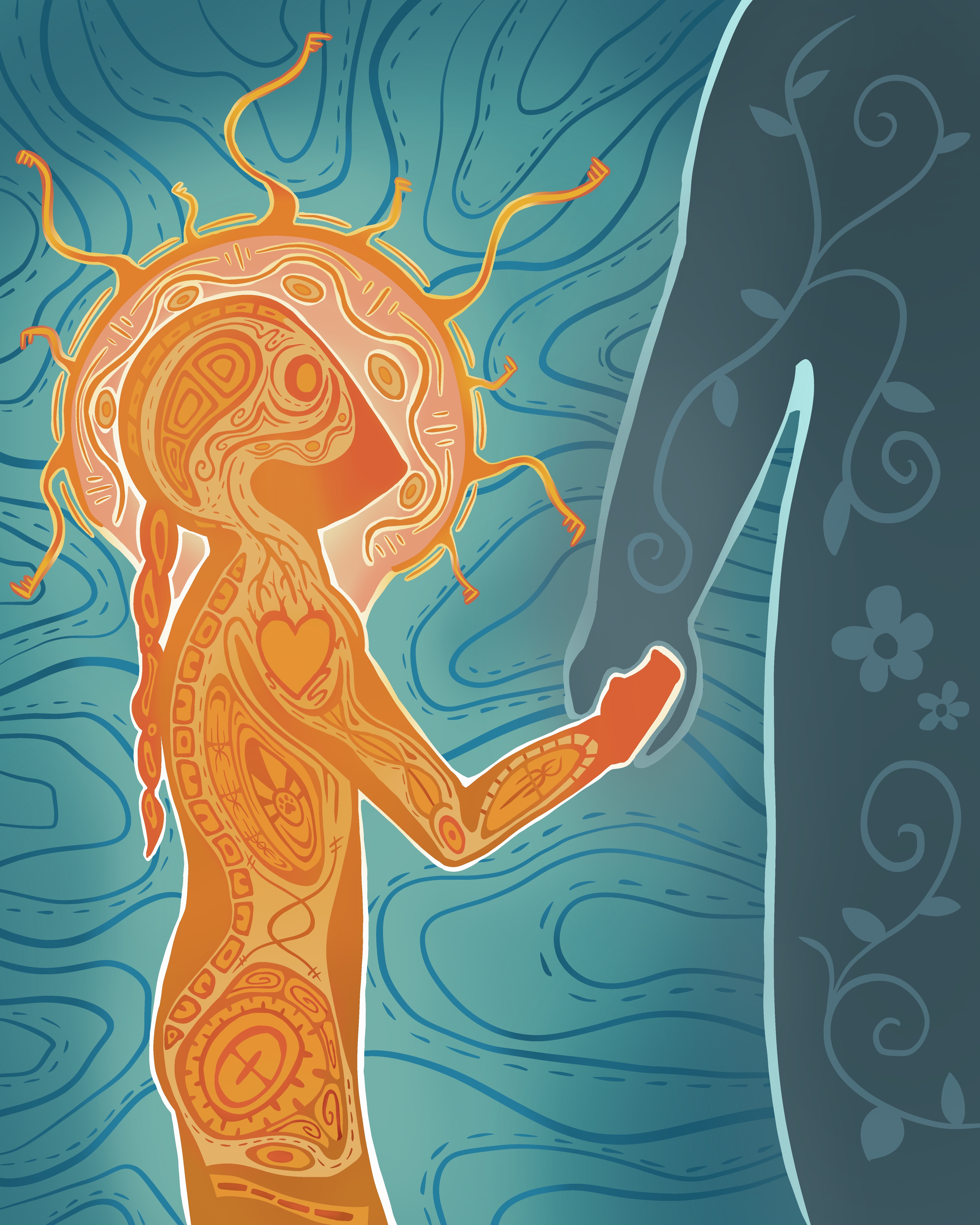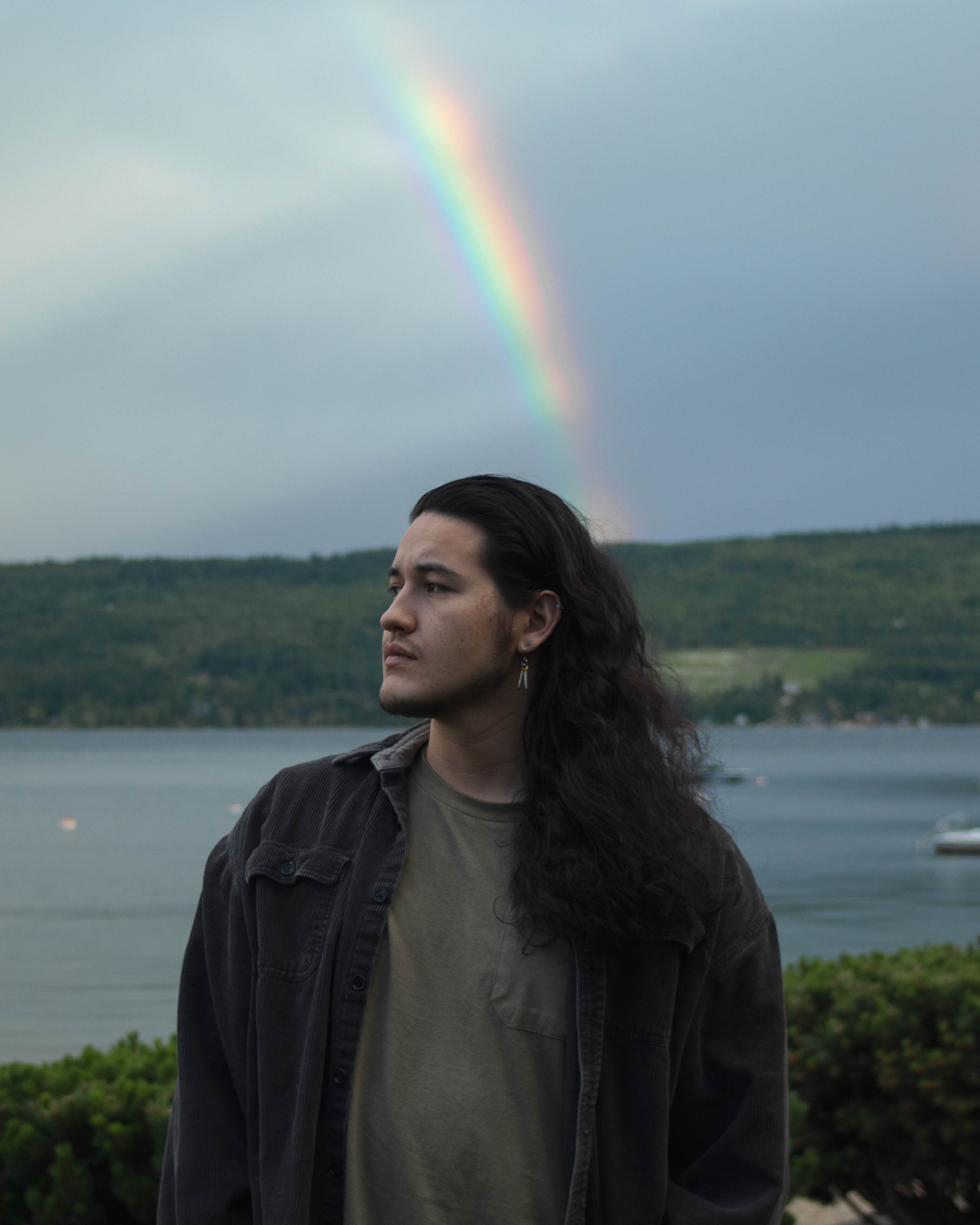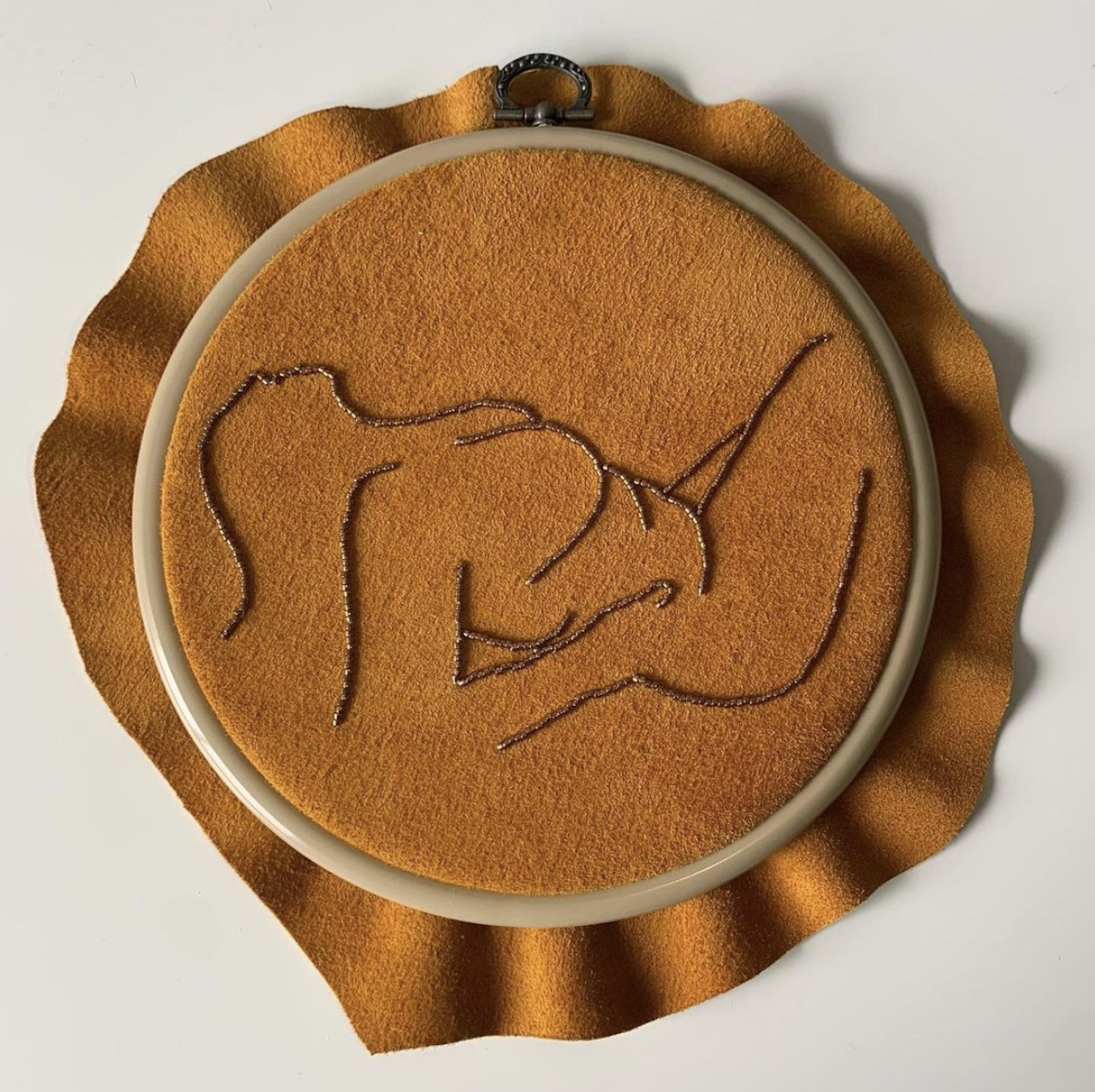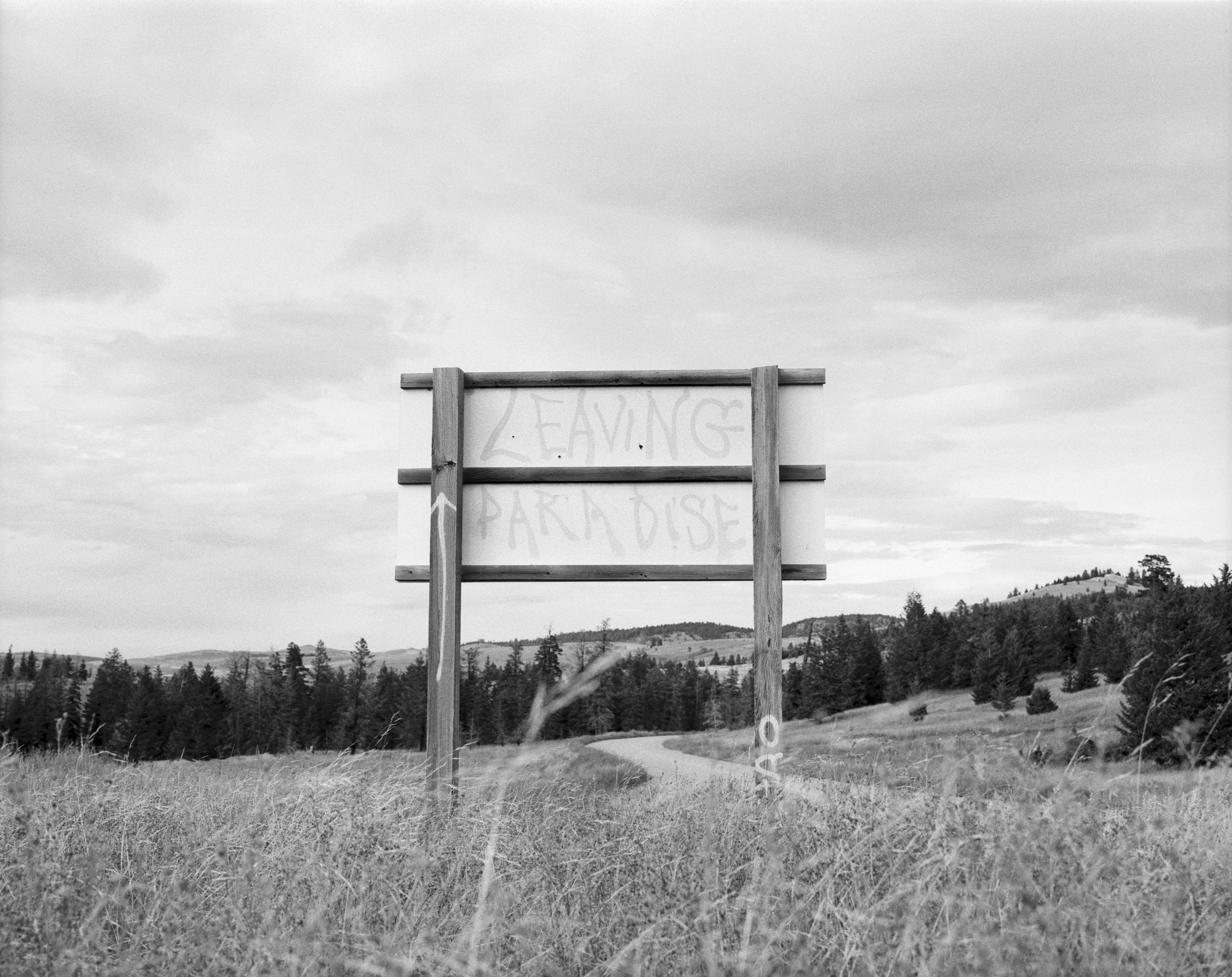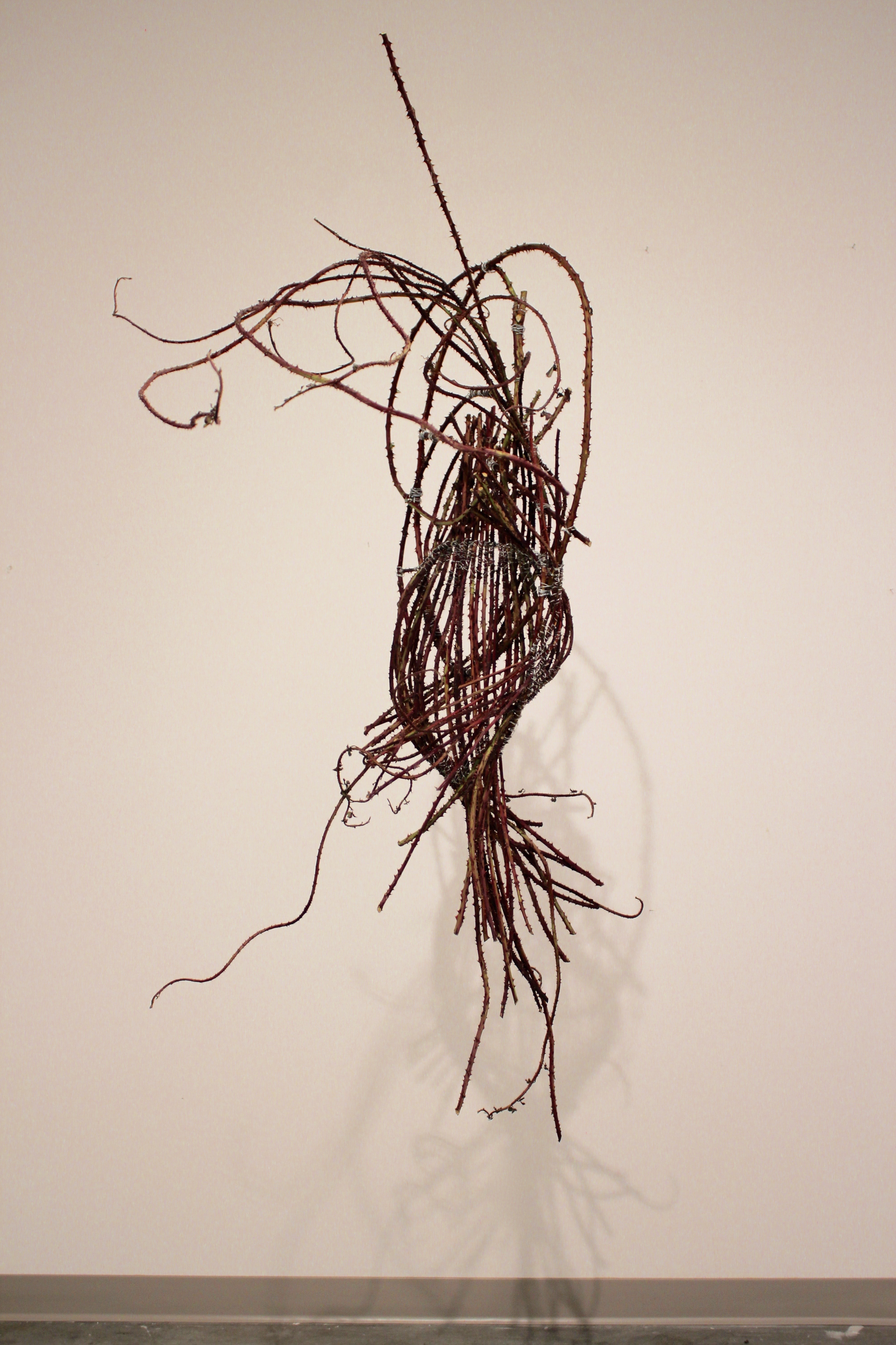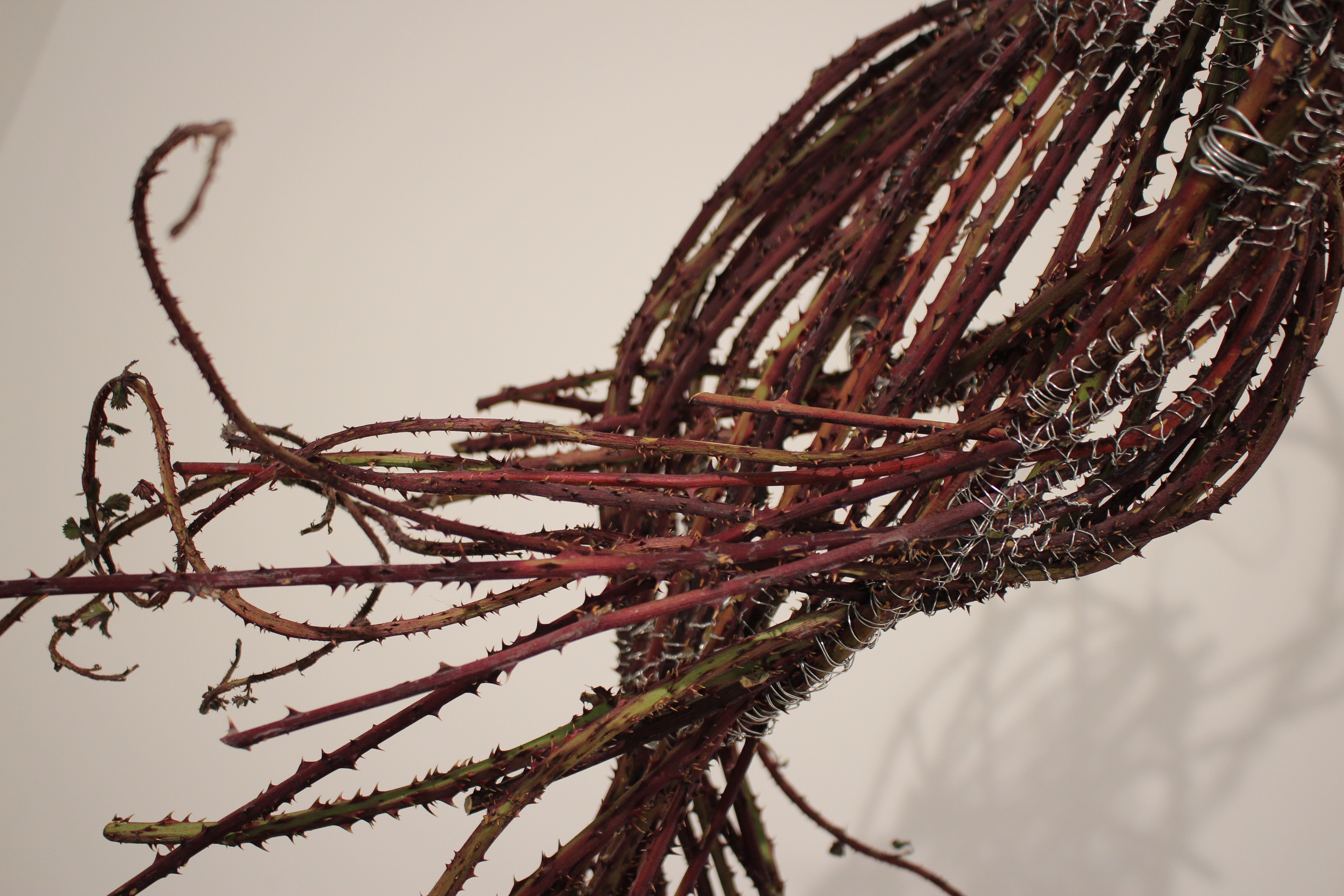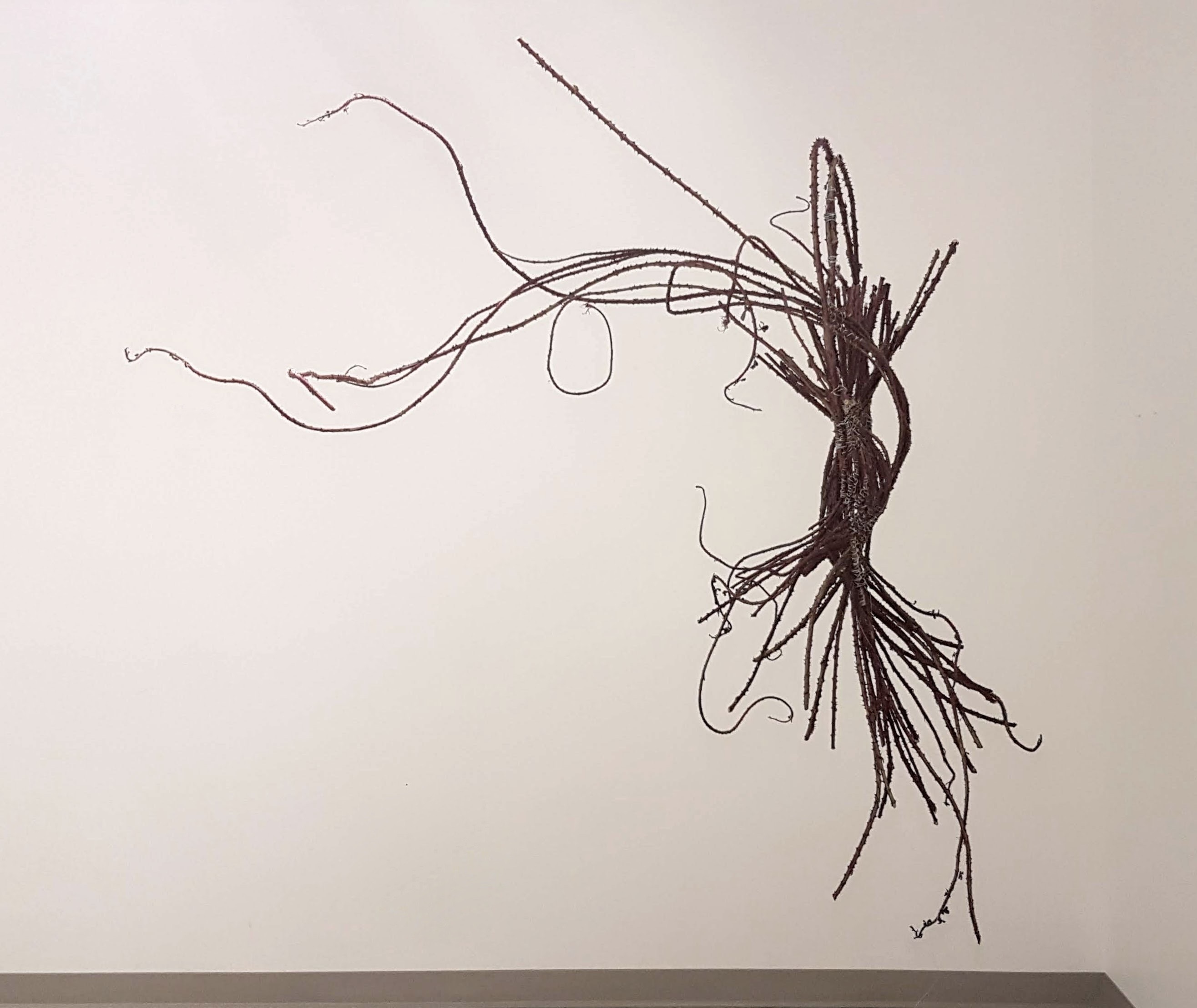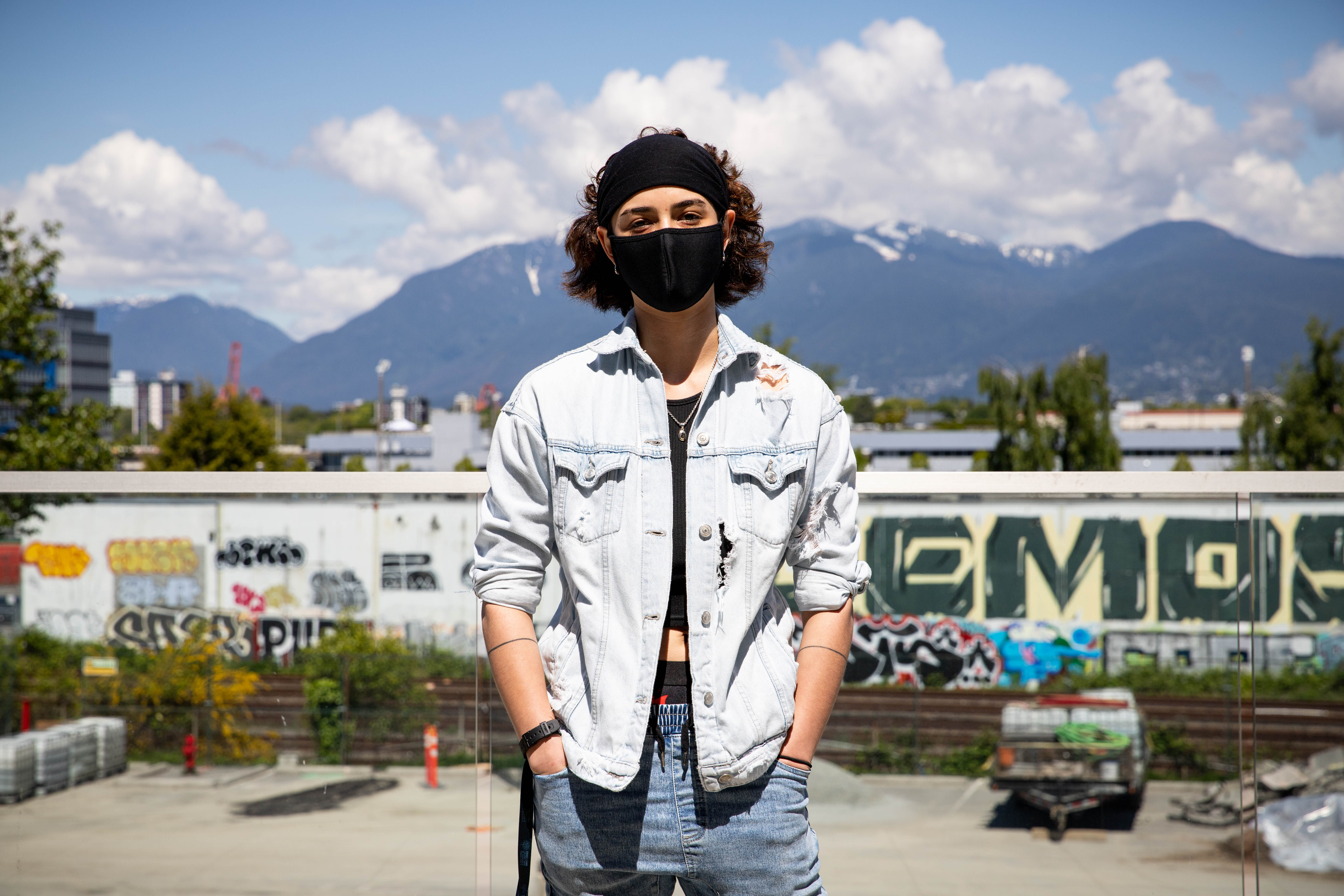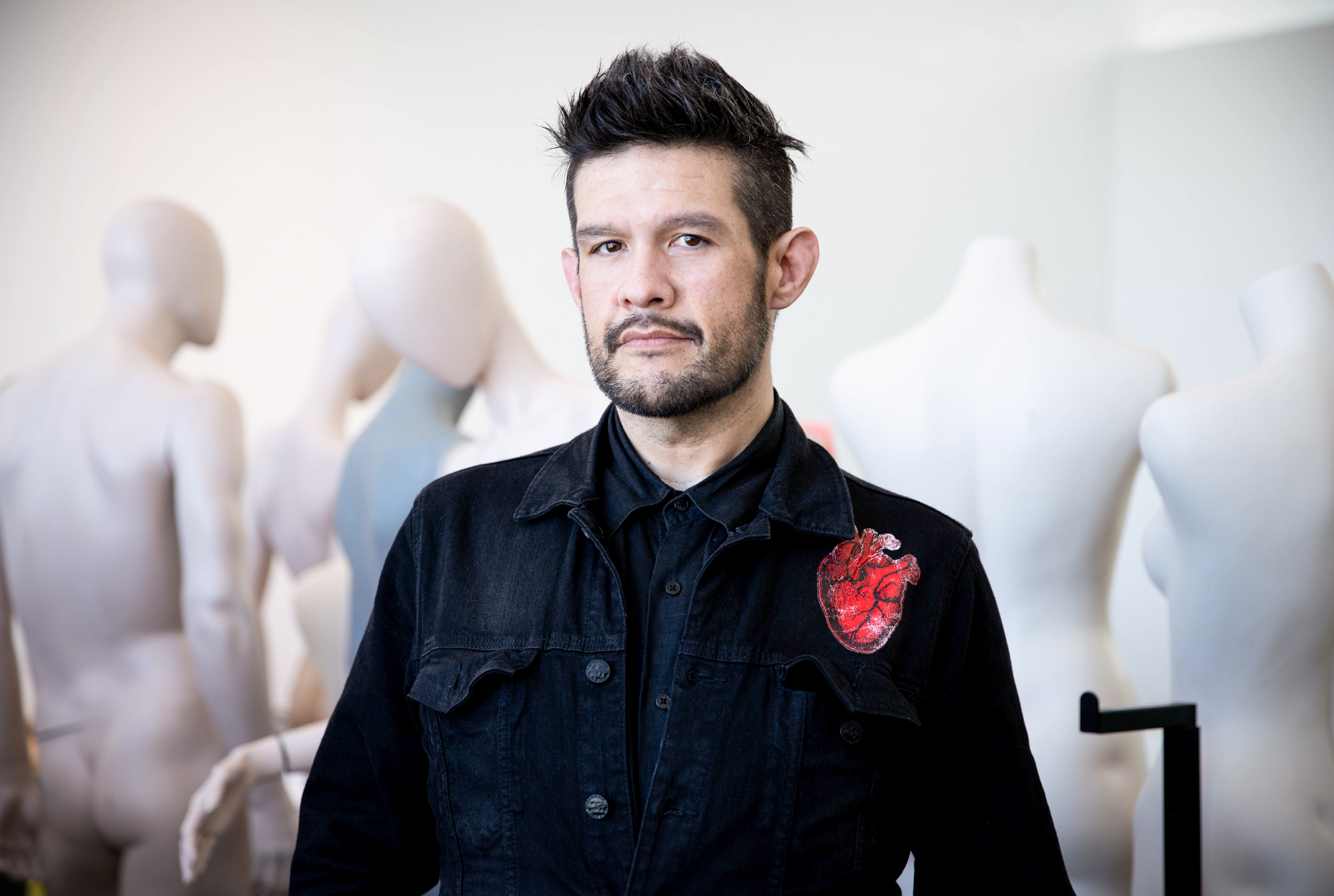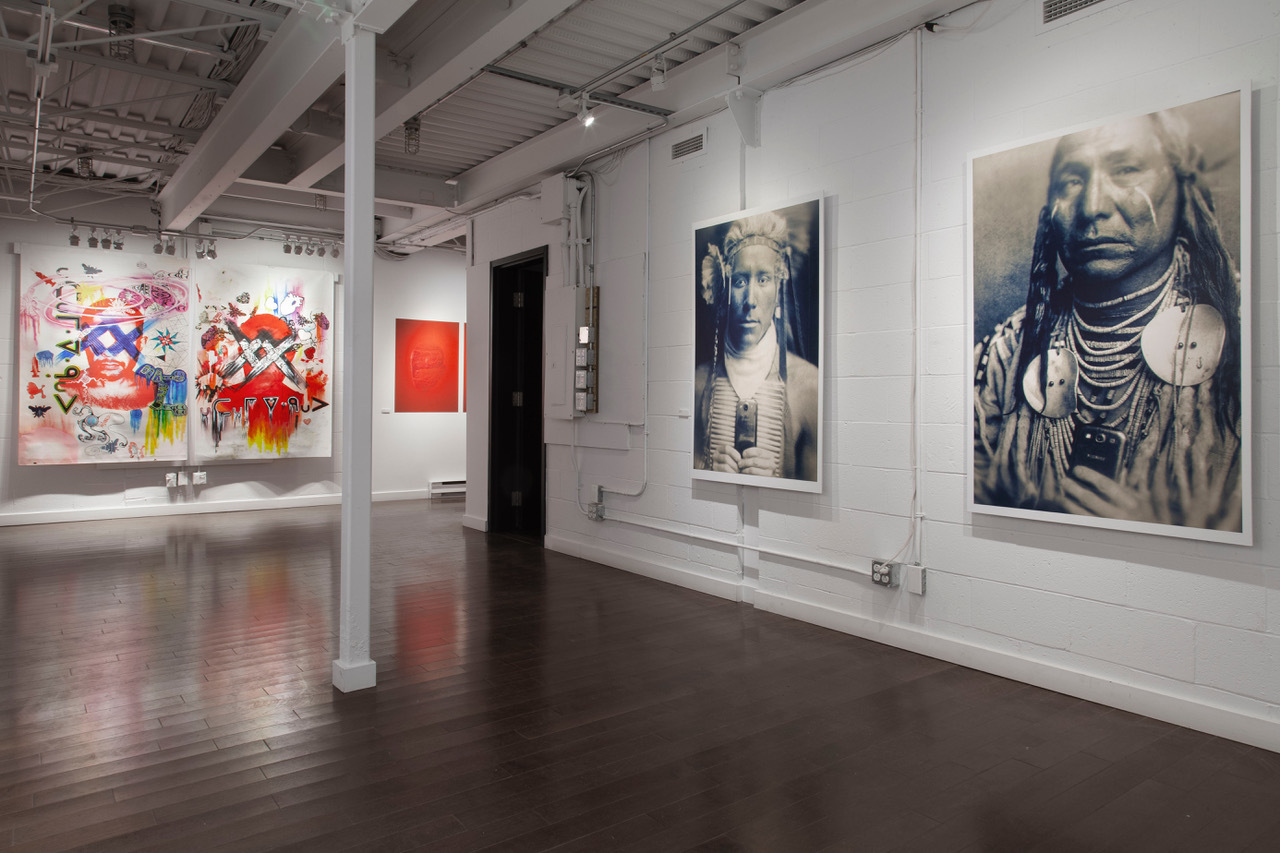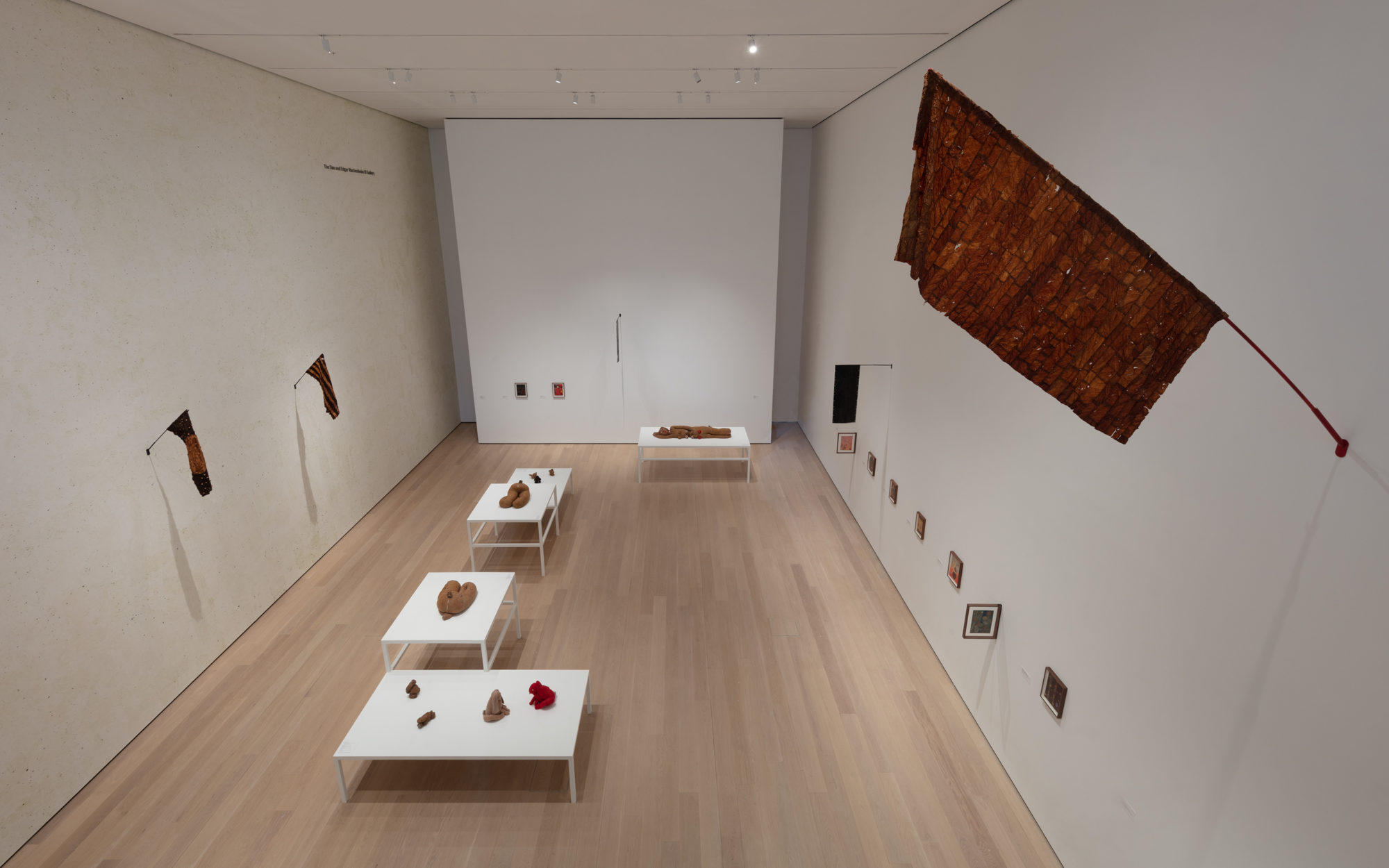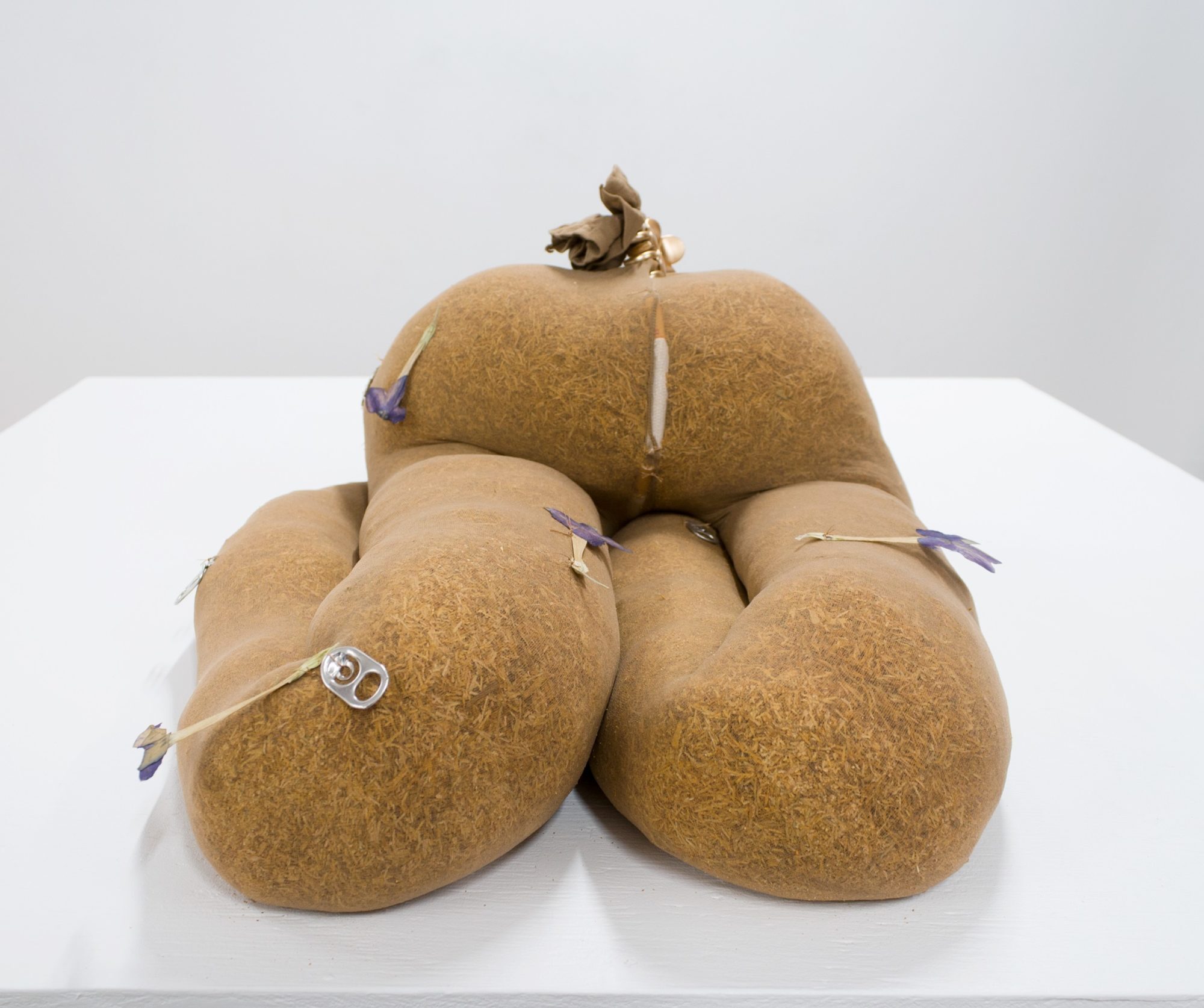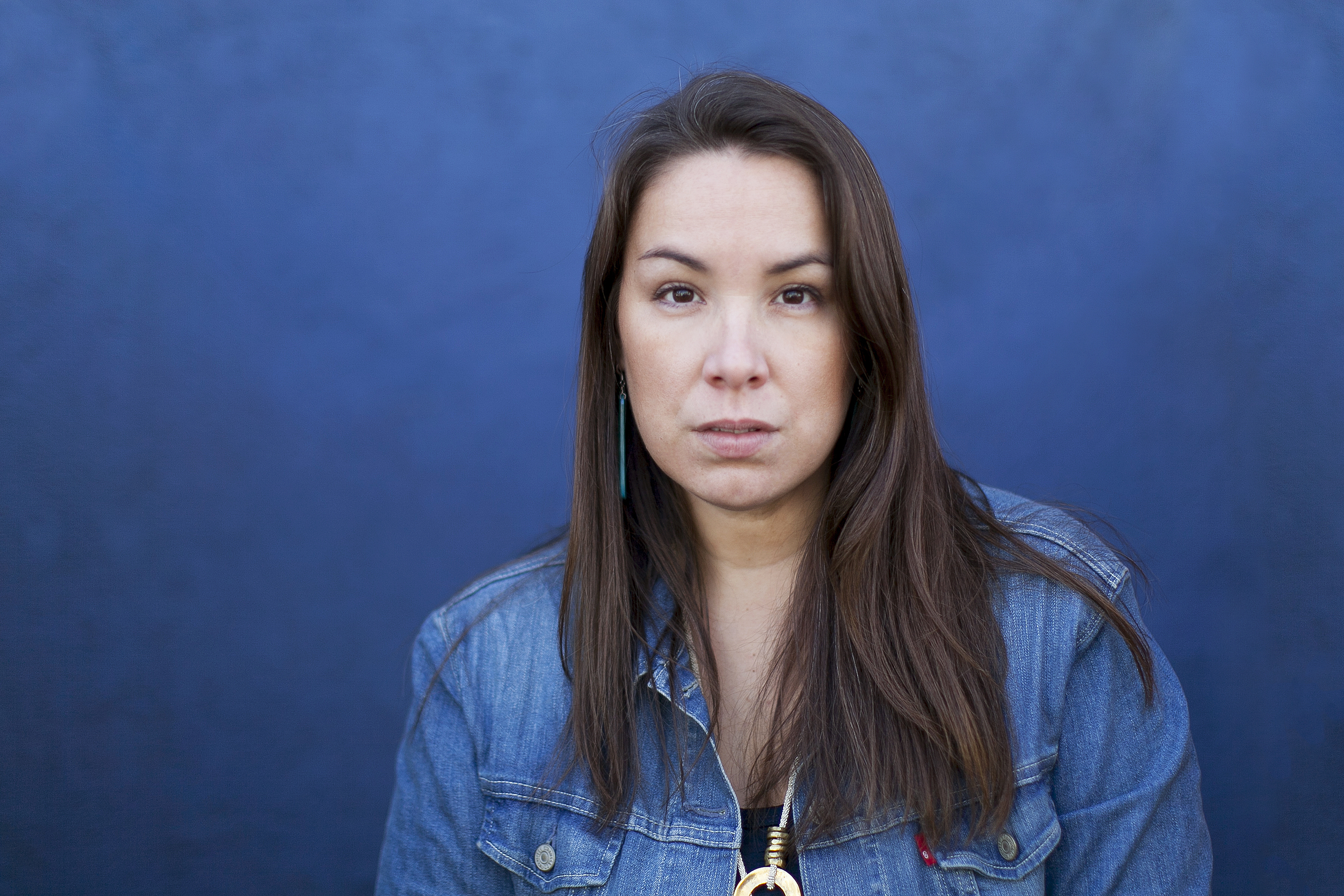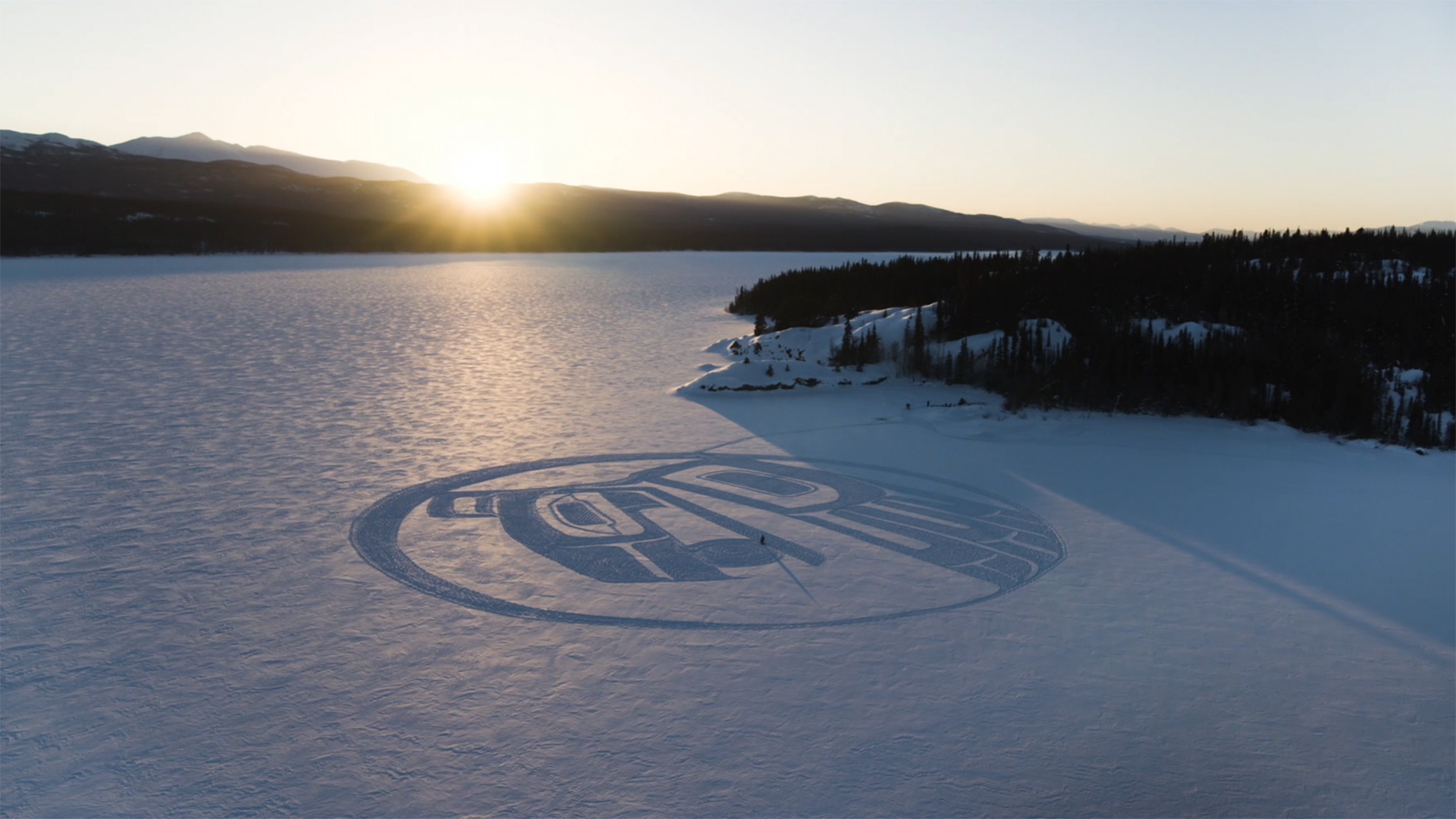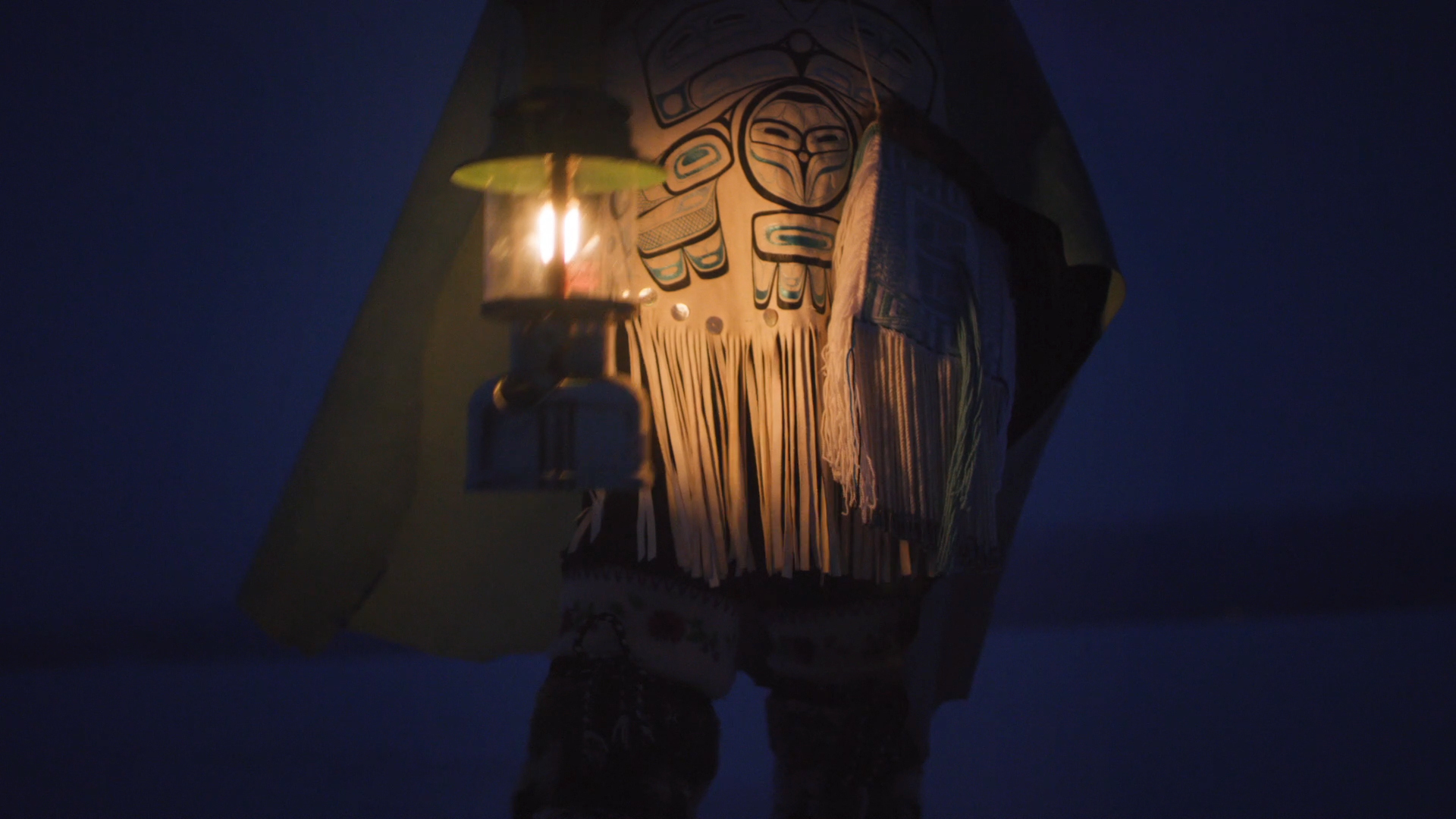A new book spotlighting the 2021 exhibition by Indigenous students, staff, faculty and alumni at Emily Carr University takes stock of the extraordinary diversity of the group’s art practices, conjuring images of a brighter future through art.
Titled Beyond Now, the catalogue documents the exhibition of the same name, which took place at Emily Carr University in March, 2021. Like the show, the book celebrates connectedness despite an unprecedented isolation, write Angela Marston, artist, designer and program coordinator at the Aboriginal Gathering Place (AGP), and Sydney Pickering, artist, activist, family archivist, community advocate and Aboriginal lead with the AGP.
“As we navigate through a time of uncertainty, we are able to find connection, community and culture through this collection of artworks by Emily Carr University’s Indigenous students, alumni, faculty, and staff,” the pair, who curated Beyond Now, write in their exhibition statement. “This exhibition explores living towards the future. Our ancestors thought beyond the present with future generations in mind. As we live in a time of uncertainty, what do you see beyond now? What do you hope for beyond now?”
Elegantly laid out by Sydney, the full-colour catalogue features profiles of the artists who participated in the Beyond Now exhibition. Biographies, artist statements and photos of artworks are included for artists Randall Barnetson, Diane Blunt, Preston Buffalo, Destanie Clayton, Brenda Crabtree, Nicole Johnston, Zoë Laycock, Angela Marston, Levi Nelson, Daniel Pickering, Sydney Pickering, Jessey Tustin, Connie Watts and Meghan Weeks.
“It has been an honour to work with pieces that truly show our Indigenous community’s creativity and talent,” Sydney writes in her acknowledgments. “Although we are all experiencing our own challenges during this difficult time, it was refreshing to be able to create a space to honour our community’s strength and resilience through art.”
Visit the AGP’s website at aboriginal.ecuad.ca to download the digital catalogue, and learn about past exhibitions by Aboriginal students at Emily Carr.
